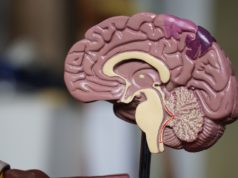
The resident immune cells of the central nervous system—microglia—are thought to play a role in the brain’s response to injury and other neurodegenerative processes. It has been suggested that prolonged microglial activation happens after single and repeated traumatic brain injury.
Martin G Pomper of the Johns Hopkins Medical Institutions, Baltimore, USA, and coauthors, have conducted a positron emission tomographic (PET) imaging study of 14 current or former National Football League (NFL) players and 16 nonplayers for comparison.
The researchers measured a marker of activated glial cell response, which may be a biomarker for brain injury and repair in living patients. This marker, the translocator protein 18 kDA (TSPO), normally exists at low levels in brain tissue but increases within activated microglia or with microglial proliferation.
The NFL players, who reported an average of seven years since their last self-reported concussion, showed higher distribution volume in 8 of 12 brain regions examined. The authors also reported limited white matter changes in the brains of NFL players compared with the matched nonplayers used for comparison. There appeared to be no difference in regional brain volumes or neuropsychological performance.
“These results suggest that localised brain injury may be associated with NFL play, although further study is needed to test links to onset of neuropsychiatric symptoms,” the study concludes.













